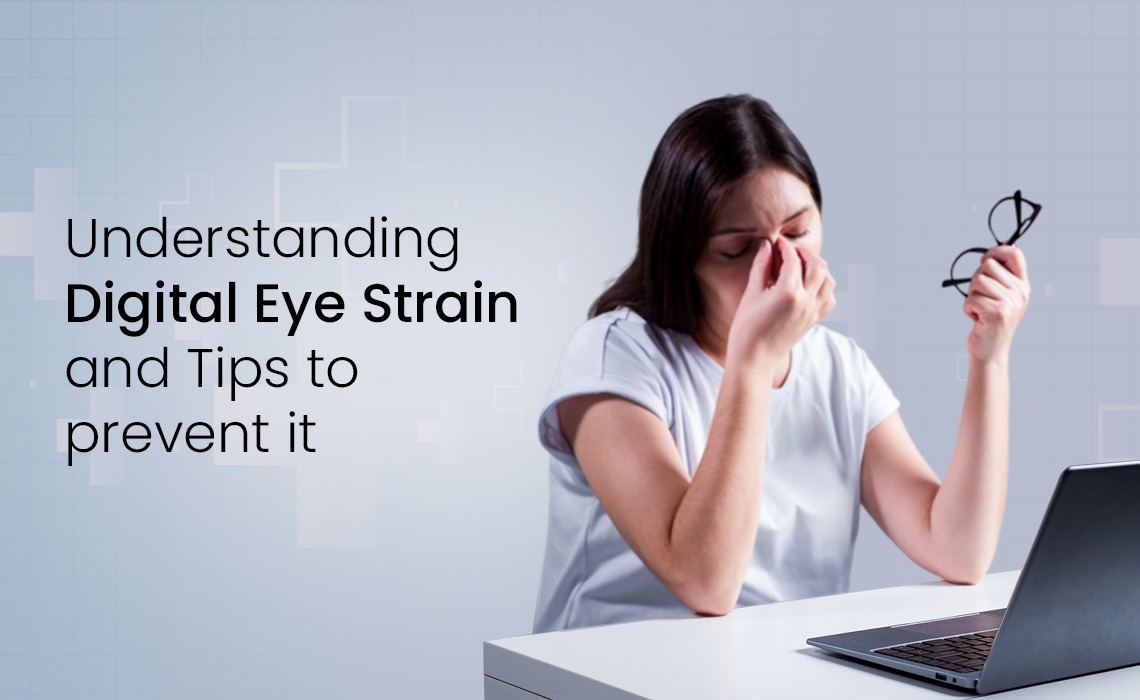In today’s digital world, we spend more time than ever in front of screens whether it’s working on computers, browsing on smartphones, or watching TV. While digital devices have made our lives easier, excessive screen time can lead to a condition known as digital eye strain, also called computer vision syndrome. At Tandon Eye Hospital, led by Dr. Aayush Tandon, we are dedicated to helping patients manage and prevent the discomfort caused by digital eye strain.
What is Digital Eye Strain?
Digital eye strain occurs when your eyes are overworked from prolonged exposure to digital screens. This can happen when you spend hours focusing on a screen without giving your eyes a break. The combination of bright light, close proximity, and continuous focus can cause various symptoms that affect your eye health and overall well-being.
Symptoms of Digital Eye Strain
Digital eye strain can manifest in a variety of symptoms, including:
•Eye discomfort or irritation: A common symptom is a feeling of tired, sore, or itchy eyes after spending long hours in front of a screen.
•Blurred vision: Extended screen time can make it difficult to focus clearly, causing blurriness or trouble seeing at different distances.
•Dry eyes: Staring at a screen reduces the rate of blinking, which can lead to dryness and discomfort.
•Headaches: Straining your eyes for a prolonged period can result in tension headaches.
•Neck and shoulder pain: Poor posture combined with eye strain often leads to physical discomfort in other areas of the body.
•Sensitivity to light: Extended screen exposure can increase sensitivity to bright light or glare, making it difficult to see clearly.
These symptoms are more likely to occur if you use digital devices for more than two consecutive hours a day.
Causes of Digital Eye Strain
Digital eye strain is typically caused by prolonged screen use, but several other factors can contribute, including:
•Improper lighting: Glare from digital screens and harsh lighting conditions can strain your eyes.
•Poor posture: If your computer screen or device is not at the proper angle or distance, it can cause your eyes to work harder, leading to strain.
•Reduced blinking: When using digital devices, we blink less frequently, which can cause dryness and discomfort.
•Uncorrected vision problems: If you have underlying vision issues such as myopia or astigmatism that are not corrected, using digital screens can exacerbate eye strain.
Preventive Measures for Digital Eye Strain
Dr. Aayush Tandon recommends the following preventive measures to reduce the risk of developing digital eye strain:
1. Follow the 20-20-20 Rule
One of the simplest and most effective ways to prevent digital eye strain is by following the 20-20-20 rule. This means that every 20 minutes, you should take a 20-second break and look at something 20 feet away. This gives your eyes a chance to rest and refocus.
2. Adjust Your Screen Settings
•Brightness and contrast: Adjust the brightness of your screen to match the lighting in your room. If your screen is brighter than the surrounding light, it can cause glare and strain.
•Text size: Increase the font size on your devices to make reading easier and reduce the need to strain your eyes.
3. Position Your Screen Correctly
•Distance: Your computer screen should be about an arm’s length (20-24 inches) away from your eyes.
•Height: Position the screen so that the top of the monitor is at or just below eye level. This ensures that your eyes are looking slightly downward while viewing the screen, reducing strain.
4. Blink More Often
While working on screens, remember to blink frequently to keep your eyes moist. You can also use artificial tears or lubricating eye drops to relieve dryness.
5. Reduce Glare
Minimize glare from screens by adjusting the lighting in your workspace. Use anti-glare screen protectors or position your screen away from windows and bright lights to reduce reflection.
6. Use Computer Glasses
If you spend extended periods in front of a computer or digital screen, consider wearing computer glasses that are designed to reduce eye strain. These glasses help filter blue light and reduce glare, making screen use more comfortable.
7. Take Regular Breaks
In addition to following the 20-20-20 rule, try to incorporate longer breaks throughout the day. Get up, move around, and focus on distant objects to reduce the stress on your eyes.
8. Maintain Proper Posture
Good posture is crucial for preventing both eye strain and physical discomfort. Make sure you sit with your back straight, and feet flat on the floor, and keep your screen at the correct height and distance.
When to See a Doctor
If you’re experiencing ongoing symptoms of digital eye strain that don’t improve with preventive measures, it’s important to schedule an eye exam. At Tandon Eye Hospital, Dr. Aayush Tandon specializes in diagnosing and treating eye conditions caused by prolonged screen use.
During an eye exam, Dr. Tandon can evaluate your vision, identify any underlying issues, and recommend personalized solutions, such as prescription glasses or computer eyewear, to relieve your symptoms.
Contact Tandon Eye Hospital Today
If you’re experiencing symptoms of digital eye strain or want to learn more about how to protect your eyes in a digital world, schedule an appointment with Dr. Aayush Tandon at Tandon Eye Hospital today. Let us help you keep your eyes healthy, comfortable, and strain-free.




